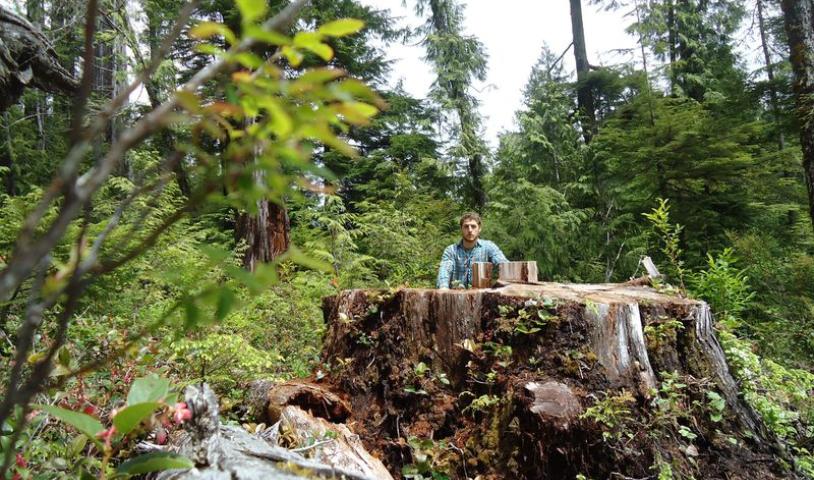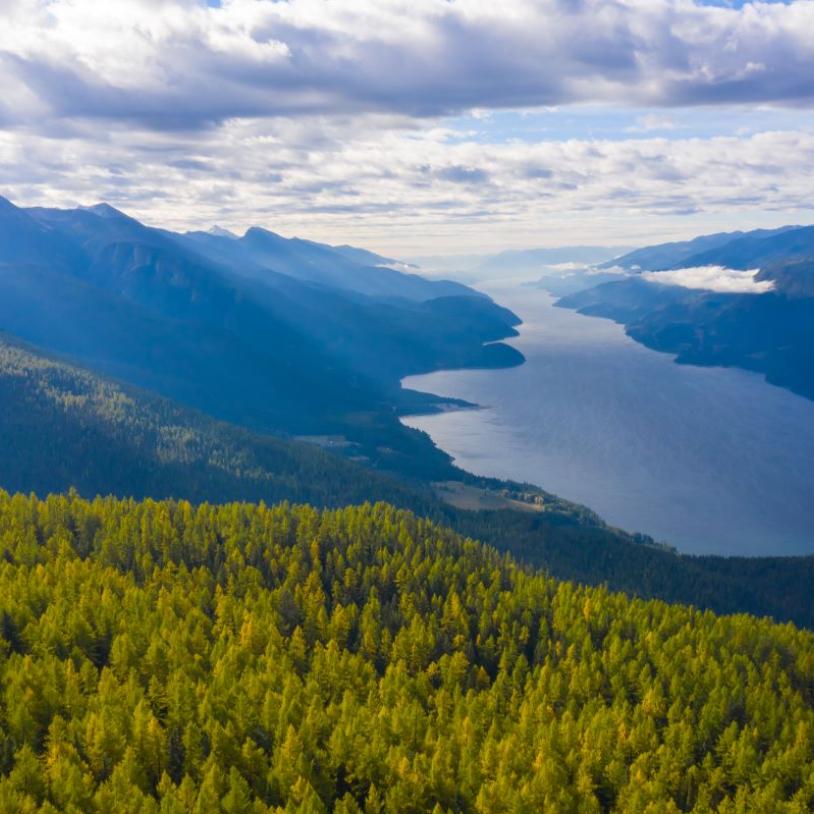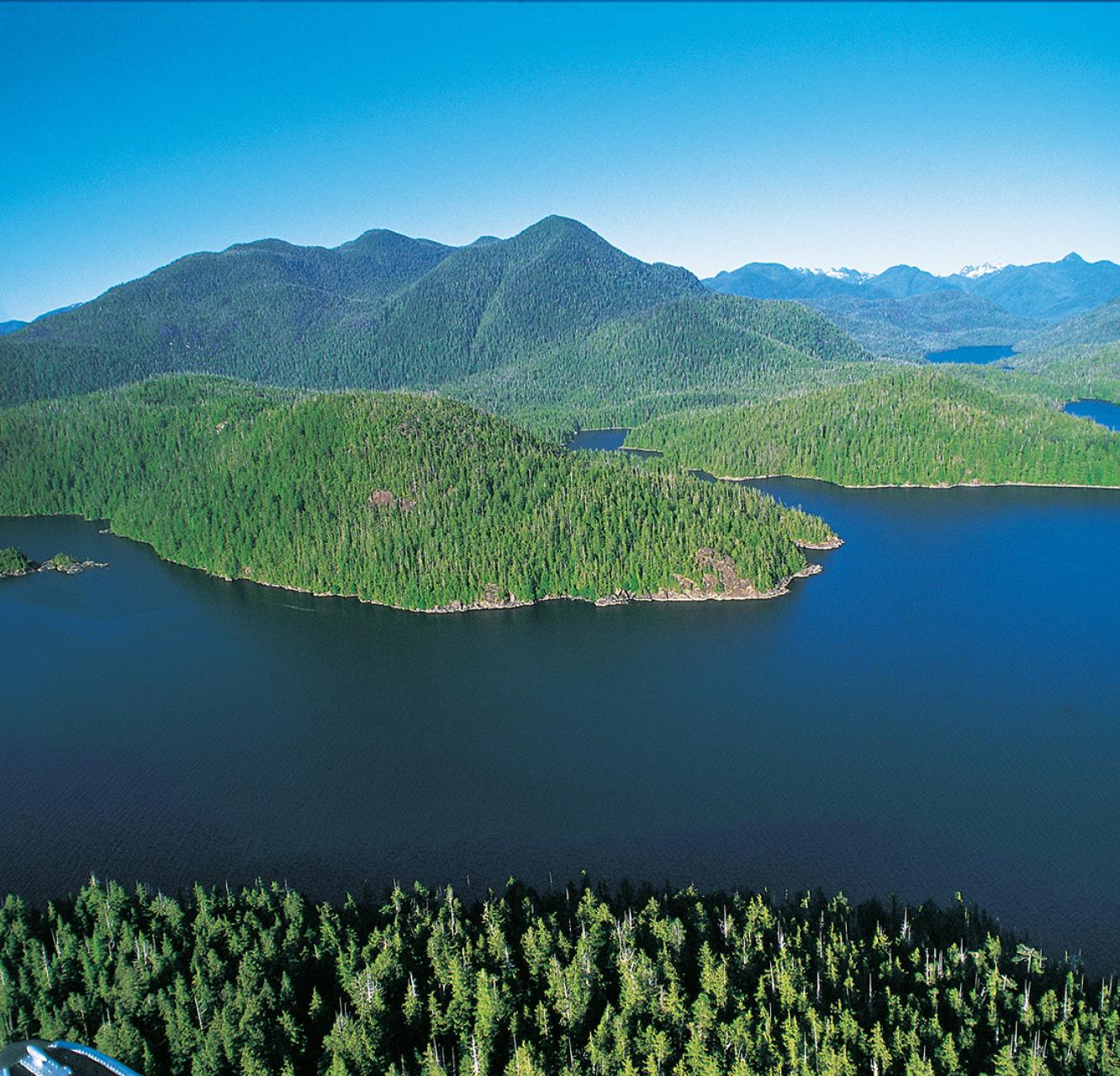How Thousand‑Year‑Old Trees Became the New Ivory
Wednesday, May 24, 2017
It was a local hiker who noticed, during a backwoods stroll in May 2012, the remains of the body. The victim in question: an 800-year-old cedar tree.
Fifty meters tall and with a trunk three meters in circumference, the cedar was one of the crown jewels in Canada’s Carmanah Walbran Provincial Park. Now all that remained was a minivan-sized section of its trunk, surrounded by shards of wood and dust, with broken heavy equipment chains lying nearby.
This park is firmly rooted, filled with centuries old Sitka spruce and cedar that impose a towering permanence. These trees are also an integral part of the forest ecosystem: moss and lichen grow on them, mushrooms sprout from the damp bark at their base. Their branches are home to endangered birds like the tiny grey and white marbled murrelet, which scientists presumed regionally extinct until they found a lone bird in the Carmanah.
But lately, these living ecosystems have been disappearing across the province. In the past decade, forest investigators have found themselves fielding cases in which more than 100 trees were stolen at once.
The Carmanah hiker, Colin Hepburn, happened to be a member of the activist group Wilderness Committee. He called Torrance Coste, the protection group’s regional campaigner, who alerted British Columbia Parks and the Royal Canadian Mounted Police (RCMP). A week later, Coste travelled from Victoria to the Carmanah. Coming upon the old growth’s stump was “overwhelming,” he says. He demonstrated its immense size by lying down on it, sitting on it and standing on it in news photos.
The province took the case seriously. The theft was jointly investigated by BC Parks, the RCMP and the province’s Conservation Officer Service, but with no promising leads, the RCMP dropped the case within a few months. BC Parks keeps the file open; Don Closson, the area’s supervisor, says they are waiting to breathe new life into it. But if history is any indication, that isn’t likely to happen: When it comes to the underground world of black market timber, the case of this 800-year-old cedar is just the tip of the iceberg.
Global timber theft has grown into a “rapidly escalating environmental crime wave” according to a 2012 report by the United Nations Environmental Program (UNEP) and Interpol, titled Green Carbon, Black Trade. The report estimates that somewhere between 15 to 30 per cent of the global timber trade is conducted through the black market and linked to organized crime outfits that wouldn’t balk at trading weapons or humans. Now with armed “timber cartels” as part of their operation, these groups have identified profit in the immense value of ancient nature.
Every summer, Interpol and the UNEP hold a conference in Nairobi where they convene over issues in international poaching and black market trade. In the past couple of years, the conference has been focused on elephant poaching and timber theft. Wood, says the UNEP, is the new ivory: a natural resource valued for its scarcity and beauty, which takes decades to grow but just moments to destroy.
“Our parks are comparable to cathedrals or castles in Europe,” says Coste. “But they are not protected. There is no security.”
Globally, poached trees are estimated to be worth somewhere between $30 and $100 billion. The U.S. claims about $1 billion of that in its borders. But it's impossible to truly measure what all that stolen wood is worth.
That’s because the worth of timber is generally only considered in market value—how much you can sell it for in the form of boards or shake blocks—says Matthew Diggs, an attorney in Seattle who has dealt with many timber theft cases. That number doesn’t take into account the fact that, in parks like Washington state’s Olympic National Forest, there are natural ecosystems that can only exist in an untouched environment.
“Honestly, there is really no way to put a value on that,” says Diggs. “[It robs] our region of one of its most precious resources—trees which will take centuries to return.”
Photo Credit: Torrance Coste - Read the original article here





